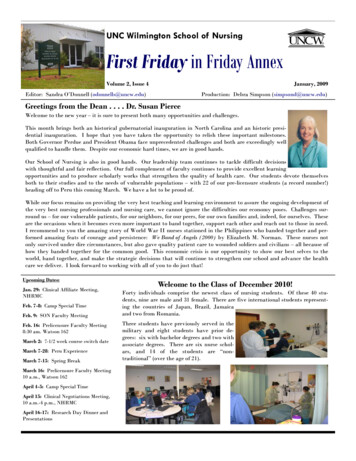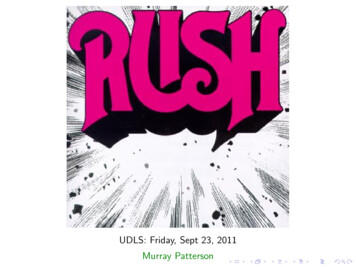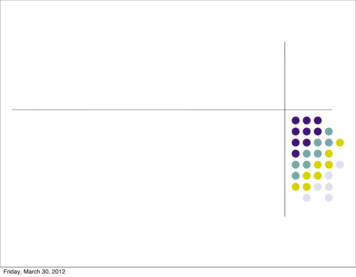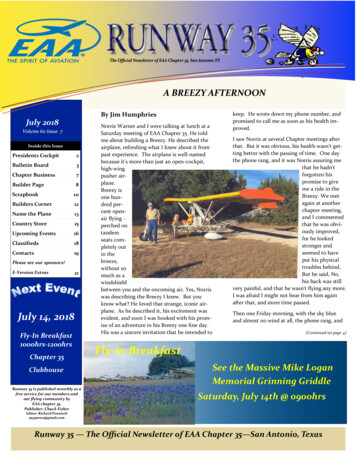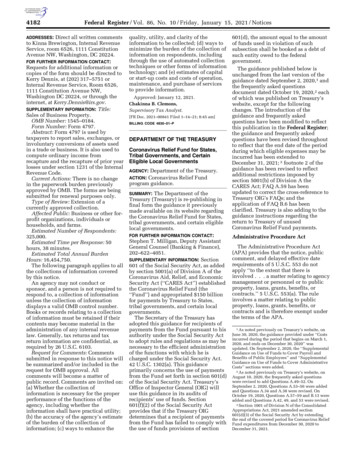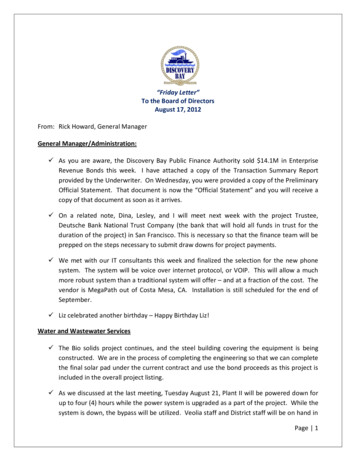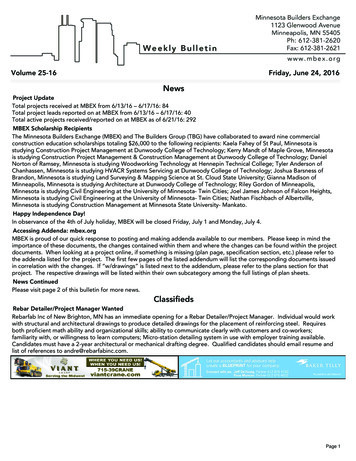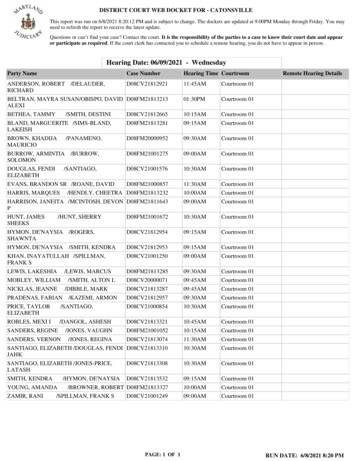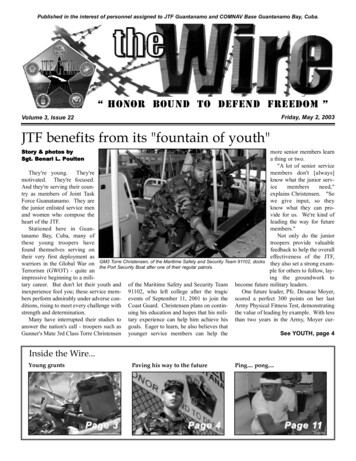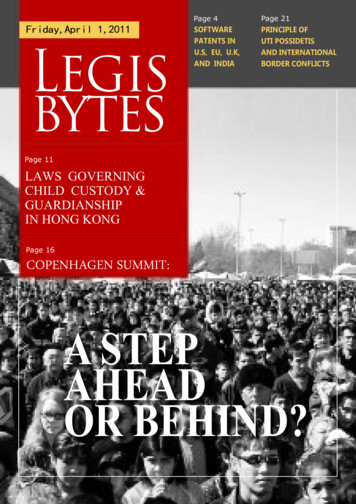
Transcription
Friday,April 1,2011LEGISPage 4Page 21SOFTWAREPATENTS INU.S, EU, U.K,AND INDIAPRINCIPLE OFUTI POSSIDETISAND INTERNATIONALBORDER CONFLICTSBYTESPage 11LAWS GOVERNINGCHILD CUSTODY &GUARDIANSHIPIN HONG KONGPage 16COPENHAGEN SUMMIT:A STEPAHEADOR BEHIND?
Keynote from the chief editorLiza Meghan (first issue)Hi Readers,I am delighted to welcome you to the first issue of Biz & Legis E-Journal ‘LegisBytes,’ Kerala’s premier communications law journal and the official journalof B&L. Our staff is very excited to present this very special issue.We are pleased to feature articles on various legal areas as well as on somecritical topics which require immediate concern. The issues cover various jurisdictions and continents.The year 2010 will go down in history as one of the hottest year with manyother extreme climate and weather events. So one of our article deals withthe Copenhagen Summit on climate change; how far it was a success and theresultant political agreement.We have another interesting feature on Laws Governing Child Custody andGuardianship in Hong Kong where the author who had done an extensive research in various laws in Hong Kong writes about four Ordinances and relatedmatrimonial issues in Hong Kong. A write-up on Moral Rights explains aboutBerne Convention, its contributions to an author of a copyrighted work andthe difference between how these rights are in India and US.Under technology / computer law, we have featured an article on SoftwarePatents in U.S., EU, U.K., and India. Software has been one of the relativelynew areas to receive patent protection, but do these countries know to whichextent these patents should be granted and the standards they should adoptwhile providing patents.There is one write up on border conflict among the countries and the principleof Uti Possidetis, which is classified under Customary International law. Againwe have some comments about the popular route nowadays for entrepreneurs; Limited Liability Partnership, enacted under the LLP Act 2008.I would like to thank all my colleagues for their wonderful work and supportfor making this dream a reality. We are committed to all our readers for accurate and timely coverage on various legal and economic/non-economic issues.Have a knowledgeable and well informed 2011
Message fromprincipal partnerJolly JohnI am proud to pen the below words, on this first page of first issue of ‘Legisbytes’, the Ezine from Biz & Legis.It is the confluence of hard work, resilience, team spirit and expertise that makes us who we are. With just five clients two yearsago, B&L has grown to new heights and now we have reachedthe second phase of our growth.Mr. Jolly John is thePrincipal Partner of Biz& Legis. He has dualmasters in Law. A specialist in Corporate andInformation Technologylaws, he is a registeredlawyer with Bar Council of India since 1997.He had been a registered Foreign Lawyerwith Law Society ofSingapore. He workedwith Baker and McKenzie, Singapore, in theCorporate Commercial(Information Technology) Practice Group.2011 has been a golden bag of opportunities for us, we haveachieved in the first quarter 75% growth , launched our new corporate website, introduced seven proprietary legal solutions,entered into JV with three universities, acquired many major clients and now pleased to unveil our online legal magazine .B&L will always carry with us the progressive and entrepreneurial spirit that has become the firm’s living mantra. As we continueto serve our clients enthusiastically, author scholarly articles,nurture and guide future lawyers, help in shaping future policies,we are putting into action our commitment to forward –thinkingand preparing for the dynamically changing world of businesslaw.Once again, I sincerely thank all our clients, well-wishers andcrew members without them B&L can’t achieve anything.I do hereby unveil ‘Legisbytes’ to the world.
SOFTWARE PATENTSIN U.S, EU, U.K,AND INDIAApatent is a set of exclusive rights granted by a Stateto inventors or his assignees for a limited periodof time in lieu of public disclosure of their inventions. Under the traditional principles of intellectualproperty protection, the main purpose of patentlaw is to encourage scientific research, new technology and industrial progress. The fundamentalprinciple behind patent law is that patent protection is accorded only to inventions, that is to sayan invention must be novel and ought to have utility, to be eligible for patent protection. But whatsubject matters qualify as inventions vary as per the domesticlaws of the respective countries. Computer software has beenone of the relatively new areas to receive patent protection.The term ‘software’ does not have a precise definition. Softwarecan be understood as to be the programs or other “instructions”,that a computer needs to Computer software has beenperform specific tasks1 . In one of the relatively new areas toother words, the term ‘soft- receive patent protection. Nowware’ is used to describe that countries are slowly openingall the different kinds of up to the idea of patenting softcomputer programs. The ware-related inventions, the majorterm ‘software patent’ also question facing them is the extentto which these patents should begranted. Which is the standardthey must adopt?Legis bytes - Ezine from Biz and Legis4
Legis bytes - Ezine from Biz and Legisdoes not have a universally accepted definition2 . One definition suggested by the Foundation for a Free Information Infrastructure is that, a software patent is a “patent onany performance of a computer realised by means of a computer program3” . In otherwords, Software patents refer to patents that could be granted on products or processes which include or may include software as a significant or at least necessary part oftheir implementation, i.e. the form in which they are put in practice (or used) to producethe effect they intend to provide4 . The patentability of software-related inventions iscurrently one of the most heated areas of debate. The growing economic significanceof computers and computer programs gives software patents this contentious status.The debate, as to whether software patents should be granted or not, continue till date. Considering that a country agrees to grant software patents, the next question that arises is the extent to which patents should begranted. Some of the important issues concerning software patents include: Where the boundary between patentable and non-patentable softwareshould lie;Whether the inventive step and non-obviousnessrequirement is applied too loosely to software; andWhether patents covering software discourage, ratherthan encourage, innovation.Most countries are now opening up to the idea of grantingpatent protection to software-related inventions. But eachof these countries have adopted different standards todecide the scope of patent protection they wantto grant to software-related inventions. Accordingly, I would like to bring to your noticethe different laws prevalent in U.S., EU, U.K.,and India with respect to Software patents.Position in U.S.Software was not always given patent protection in the U.S. This trend has gradually changed over a period of time. As oftoday, software is patentable in the U.S.In the 1960s, the USPTO (U.S. Patent Office)was reluctant to grant patents on inventions related to Computer Software. In 1968, the Office issuedLegis bytes - Ezine from Biz and Legis5
Legis bytes - Ezine from Biz and Legisformal guidelines for computer related inventions to formalize “The debate as tothis reluctance. These guidelines stated that a computer pro- whether software patgram, whether claimed as an apparatus or as a process, was ents should be grantednon-patentable. Under these guidelines, an invention relating or not continue tillto a programmed computer could be patentable only if the date. Considering thatcomputer were combined with other, non-obvious elements to a country agrees toproduce a physical result5 . In the 1970s, the Supreme Court grant software patexamined the question of patentability of inventions contain- ents, the next questioning computer software. In these cases the Supreme Court that arises is the exheld that inventions containing computer software were non- tent to which patentspatentable6 . In the 1980s, the Supreme Court’s decision in should be granted.”Diamond v. Diehr 7 forced the USPTO to change its stance. In this case, the SupremeCourt ordered the PTO to grant patent, even though the invention had utilized computer software. The court, in this case, essentially ruled that while algorithms themselvescould not be patented, devices that utilized them could be patented. Since this decisionwas not very straightforward, the PTO and the inventors were left trying to determineas to when an invention was simply a mathematical algorithm and when was it apatentable invention, though it utilized a mathematical algorithm. In the 1990s, afterthe Federal Circuit was set up, it clarified the situation as to when a software relationinvention could be patentable. It was laid down that if an invention in actuality is onlya mathematical algorithm, then it was not patentable. But if an invention utilizes computer software to represent concrete, real world values then the invention is patentable.In 1998, the Federal Circuit issued its State Street Bank & Trust v. Signature FinancialGroup8 decision, which further clarified the patentability of computer software in theUnited States. In this case, the Court explicitly stated that business methods can formpatentable subject matter. It further emphasized that software or other processes thatyield a useful, concrete and tangible result should be considered patentable. In 2008,the Federal Circuit in In re Bilski set forth a single test for determining the patentabilityof processes. This test held that a process is patentable if “(1) it is tied to a particular machine or apparatus, or (2) it transforms a particular article into a different stateor thing.” The Supreme Court rejected the Federal Circuit’s holding in In re Bilski thatthe machine-or-transformation test is the sole test to determine whether a particular process constitutes patent-eligible subject matter. While the Supreme Court did notcompletely throw out this test, and in fact called the test useful and important, theCourt held that this is not the sole test for determining patent eligibility for processes.Position as of todayNow the machine or transformation test can no longer be considered as a part of the definition of process. As the law now stands, processes that fail the machine or transformation test are likely to be unpatentable for pre-empting an abstract idea, while processesLegis bytes - Ezine from Biz and Legis6
Legis bytes - Ezine from Biz and Legisthat pass the test are likely to be patentable for they do not pre-empt an abstract idea. Butthis preliminary conclusion arrived at can be overcome with an argument to the contrary.Position in European UnionThe patentability of software, computer programs and computer implemented inventionsunder the European Patent Convention (EPC) is to the extent to which the subject matterin these fields is patentable under the Convention on the Grant of European Patents of October 5, 1973. As per Article 52 of the EPC, ‘programs for computers’ are not regarded asinventions as such in order to be eligible to be granted patents. The reason for the same,in theory, is that a program does not produce a technical effect, which is sine qua non toobtain a patent, and accordingly does not qualify to become an invention. But the practicehas been different. The EPC has been interpreted by the European Patent Office (EPO) ina way that excludes only computer programs when they are claimed to be “the invention”itself as that would be a claim to an excluded subject matter “as such”9 .Thecase is the first of a series of cases heard by the Technical Board of Appeal of theEPO, wherein it began to sketch the boundaries between a computer program as such onthe one hand, and an invention making a technical contribution, albeit implemented insoftware, on the other. The Board granted the patent in this case since it made a ‘technicalcontribution to the prior art’. The Board in yet another case10 held that ‘technical contribution to prior art’ could either be a technical problem (to be) solved or a technical effectachieved by the solution. Subsequently, the principle shifted from requiring a contributionof this “technical contribution” to requiring the presence of the “technical character” element in the invention itself. In the decision of Hitachi (T/258/03) it was stated that “Whatmatters, having regard to the concept of invention within the meaning of Art. 52(1) EPC,is the presence of technical character which may be implied by the physical features of anentity or the nature of an activity, or may be conferred to a non-technical activity by theuse of technical means”. But nowhere was the term “technical character” defined. Instead,the EPO in PBS Partnership (T-931/95) stated that “the meaning of the term “technical”or “technical character” is not particularly clear.” Thus, although the EPO did grant manypatents for computer programs, the grounds for doing so do not seem to be clear at all asthe term “technical character” was never defined11 .Position as of todayAccording to the new trend, a computer program can be considered a patentable invention if, when run on a computer, it creates a “further technical effect”: a technical effectthat goes beyond the normal physical interaction between hardware and software. TheBoard considers a technical character in further effects deriving from the execution of theinstructions given by the computer program where these further effects have a technicalcharacter or cause the software to solve a technical problem12. Thus, in EU software ispatentable if they make a “further technical effect”.Legis bytes - Ezine from Biz and Legis7
Legis bytes - Ezine from Biz and LegisPosition in U.K.The Patent Law in Unite Kingdom is understood to have the same effect as the EPC.Consequently, ‘programs for computers’ are not regarded as inventions as such even inU.K. in order to be eligible to be granted patents. The current trend here is that an alleged invention will be regarded as an invention only if it provides a contribution that isnot excluded and is technical13 .The first case in U.K. which dealt with the question of whether or not a patent or patentapplication involving the use of a computer program related to an invention, or whether,instead, it related to a computer program “as such”, was the Fujitsu’s Application 14. Inthis case, the following important points were laid down U.K. Courts should look into the decisions of EPO for guidance in interpretingthe exclusionsA “technical contribution” is essential to make a potentially excluded thing patentable.It is difficult to determine what is and what is not “technical”, and each case isto be decided on the basis of facts therein.The substance of an invention should be used to assess whether or not a thingis patentable, not the form in which it is claimed. Thus, a non-patentable method cannot be patented under the guise of an apparatus.One of the loopholes of the Fujitsu judgment was that it did not say anything about theinventive step or how the inventive step should be considered when assessing inventions involving computer programs. Even the Vicom case, on which the U.K. Court ofAppeal had placed reliance, had not discussed anything in relation to inventive step. Asa result, a lot of discrepancy was seen in the practices of UKIPO and EPO in the nextseven years. The EPO modified the idea of a technical contribution to focus on inventivestep and whether there was anything that provided a non-obvious technical solution to atechnical problem. The UKIPO, in the meantime, remained rooted in a regime where thequestion of inventive step of computer program inventions was largely ignored in favourof rejections that there was no technical contribution and therefore no invention. Thesubsequent decision of the U.K. Court in 2005 in the case of CFPH LLC’s applications15brought the U.K. law closer to the practice of the EPO. But it also criticized the relianceof the EPO on paraphrasing the exclusions from patentability under the blanket headingof “technical”.Further, in 2006, the Court of Appeal in its decision in the matter of Aerotel v. Telco andMacrossan’s Application16 reaffirmed its reasoning in Fujitsu case and once again movedthe practice of the UKIPO away from that of the EPO. An appeal from this case wasmade to the House of Lords, but it refused leave to hear the appeal. Consequently, inthe absence of any decision in this regard by the House of Lords, the decision given bythe Court of Appeal in this case holds good.Legis bytes - Ezine from Biz and Legis8
Legis bytes - Ezine from Biz and LegisPosition as of todayThus, the position of law as of today in U.K. is that a computer program may be granteda patent only if qualifies to be an invention by providing a technical contribution which isnot excluded.Position in IndiaThe position in India in relation to granting of patents for software is close to that of theEU member countries. The Patents Act mentions about computer programs in Section 3(k) under the head ‘Inventions which are not patentable’. Thus, a computer program “perse” is not eligible for a patent in India. The Webster’s Encyclopedic Unabridged Dictionarydefines the term ‘per se’ so as to mean ‘in itself’ or ‘intrinsically’. Thus, we may construethat if the alleged invention is shown to be something more than mere software, then itmay qualify for a patent in India. It can also be said that an invention shall not becomeunpatentable simply because it was implemented with software. Like the EU countries,in India also the gaining of patent protection for software depends more on the draftingskills of the Patent Engineer. If the claims are drafted in such a way as to reflect that theinvention is not software per se, it shall qualify for patent protection17 .Position as of todayTill date, the Indian Patent Office or Indian Courts have not got an opportunity to decidethe legality of grant of patents to inventions involving software. Thus, the position oflaw in India as of today is that while a mathematical or a business method or an algorithm cannot be patented, a computer programme which has a technical application inany industry or which can be incorporated in hardware can be patented. Accordingly,we can say that India has adopted the conservative approach of the European patenting norms for software. This, along with judicial decisions, should sufficiently be able toensure that there is judicious patent protection for software while allowing the industryto grow through inventions and innovations, thereby mitigating the risk of trivial patentsthrottling real inventions and innovations. Now whether granting of software patent willremain rigid or whether its scope will broaden through application as in U.S. is yet to beseen.ConclusionA perusal of the laws in relation to software patents in all the above mentioned fourcountries shows the trend that computer programs, algorithms, mathematical methodsand business methods are generally not by themselves patentable. Whether to grant ordeny software patents has been determined by the National Courts in the light of theability of the inventor to draft the patent claims in such a manner so as to show that theinvention is not a mere ‘software’, but an application which utilizes the software so asto make it capable of having some industrial application or technical effect. Accordingly,Legis bytes - Ezine from Biz and Legis9
Legis bytes - Ezine from Biz and Legisthe National Courts have limited or broadened the scope as to when an invention utilizingsoftware can be granted a patent.References1. ry.html2. software-patent/3. ting.html5.6. 7. See Gottschalk v. Benson, 409 U.S. 63 (1972)8. 450 U.S. 175 (1981)9. 149 F.3d 136810. http://www.myitlawyer.com/category/patents/11. Sohei / General purpose management system case (T769/92(1995)12.Supra at 1113.14. 5. http://www.nliu.com/new/Art13.pdf16. [1997] EWCA Civ 117417. [2005] EWHC 1589 (Patents)[2006] EWCA Civ 1371ABOUT THE AUTHORRashmi Rajan is a IV year B.A.LL.B student pursuing her law coursefrom Symbiosis Law School, Pune. Her areas of interest are Intellectual Property Rights, Information technology and Banking laws.Legis bytes - Ezine from Biz and Legis10
LAWS GOVERNINGCHILD CUSTODY & GUARDIANSHIPIN HONG KONGThe article talks about the substantive laws dealing with custody of children in Hong Kong.Four ordinances related to matrimonial issues are discussed.The term Custody and differenttypes of Custody Order are explained in detail and differentiated with Right of Access. Butthe most important factor considered by the Courts in rulingthe custody of children is “thewelfare of the child, or “the bestinterests of the child.”BVinitha Prasannaaneing one of the two special administrative regions of People’s Republicof China, Hong Kong has secured an independent judicial system withinthe common law framework. Basic Law of Hong Kong is its constitutionaltext which governs the country. The country is governed by the principle of “One Country Two Systems” which makes it grossly different from the mainlandChina. The substantive laws dealing with custody of children in Hong Kong is basicallycontained in different ordinances related to matrimonial issues. They are:(1)(2)(3)(4)Guardianship of Minors Ordinance (Cap. 13) (“GMO”)Matrimonial Causes Ordinance (Cap. 179) (“MCO”)Matrimonial Proceedings and Property Ordinance (Cap. 192) (“MPPO”)Separation and Maintenance Orders Ordinance (Cap. 16) (“SMOO”)The Guardianship of Minors Ordinance administers court proceedings related
Legis bytes - Ezine from Biz and Legisto custody and upbringing of children. The ordinance is basicallybased on the principle of welfareof the child in question. The firstand paramount consideration ofthe courts in this regard shall bethe welfare of the child as in anyother common law system. Therights and authorities of the father and mother of the child areequal except for children bornout of wedlock.To characterise the parent-childrelationship, the term “rights andauthority” of the parents towardsthe child is used in the Guardianship of Minors Ordinance (Cap13). Though not defined in theOrdinance itself, these rights canbe found at common law and instatute. They include: The right to live with the childand control the child’s day-to-dayupbringing The right to the physical“possession” and “services” ofthe child The right to choose the child’s educationThe right to choose the child’s religionThe right to choose the child’s surnameThe right to inflict moderate punishment on the childThe right to consent to medical treatment for the childCertain rights to enter into contracts on the child’s behalfThe right to act for the child in legal proceedingsThe right to administer the child’s propertyThe right to appoint a testamentary guardian for the childThe right to consent to an application for a passport for the childThe right to arrange for the child to leave or emigrate from the jurisdictionThe right to consent to the child’s marriageThe right to consent to the child’s adoption1.Legis bytes - Ezine from Biz and Legis12
Legis bytes - Ezine from Biz and LegisSection 10(1) of the Guardianship of Minors Ordinance states that:“The court may, on the application of either of the parents of a minor or the Director ofSocial Welfare, make such order regarding (a) the custody of the minor; and(b) the right of access to the minor of either of his parents,as the court thinks fit having regard to the welfare of the minor and to the conduct and wishesof the parents2.”A custody order may be made only with respect to “a minor,” and does not extend beyond the child’s reaching the age of 18. Such access order may be granted only to a parent ofthe child. An order of custody or access can be discharged, varied, revived after suspensionor suspended by a subsequent court order. This type of subsequent application may be madeby either parent or a guardian of the child, or on the application of any other person havinglegal custody of the child.Section 3 of the Interpretation and General Clauses Ordinance (Cap 1) defines the term“minor” as a person who has not yet attained 18 years. Similarly, orders for maintenance ofthe child may extend beyond the child’s 18th birthday where, for instance, the child is stillundergoing education or training3.Matrimonial Causes Ordinance deals with divorce and rule of procedure for custody applications are contained in Matrimonial Causes Rules. Under rule 95 of the Matrimonial CausesRules (Cap 179), a judge or registrar may refer a case for investigation and report by theDirector of Social Welfare on any matter arising in matrimonial proceedings which concernsthe welfare of a child4.Section 19 of Matrimonial Proceedings and Property Ordinance gives power tothe courts to make such other orders as it find fit for the custody and education of the childin matrimonial cases like divorce.The term “Custody” comprises a bundle of rights that parents have over their childrenwhich includes the right to “care and control” and the right to make all important decisionsaffecting the child. Decisions like a child’s education, religion and medical treatment comesunder “care and control”. Whereas, “Access” is the right to have contact with the child, suchas through letters, emails, telephone calls, visiting the child, taking him out or having him tostay from time to time. Nevertheless, the right of access is included within the broader rightof custody itself. The degree of access granted can differ, depending on the circumstances ofthe case.“Joint custody” is where the court grants custody to both parents, although physical careand control is usually granted to only one of them. The underlying principle behind a jointcustody order is that instead of one party being given the right to decide important mattersaffecting the upbringing of the child, both parties are given that right. “Such orders denotedivorced or separated parents playing a joint role in the upbringing of the child, and neitheris excluded.”Legis bytes - Ezine from Biz and Legis13
Legis bytes - Ezine from Biz and LegisAs stated by Judge Melloy in her Judgment dated 10 September 2007 (unreported)in S and Z FCMC No. 14535 of 2005, joint custody means that the parents should be ableto make the major decisions concerning their children’s life together. Although there havebeen cases where joint custody has been ordered where the parties find it difficult or indeedimpossible to co-operate with each other, the general rule of thumb is that joint custodyshould only be ordered where the parents are able to work together effectively.Article 18(1) of the UN Convention on the Rights of the Child obliges state parties touse their best efforts to ensure recognition of the role of parents in protecting the interestsof children and that both parents have common responsibilities for the upbringing and development of the child. In Hong Kong custody is almost treated equivalent to guardianshipand sole custody orders are common. In “Sole Custody” the non-custodial parent in thesecircumstances is effectively excluded from having any decision-making role on matters affecting the welfare of the child.Another type of custody order is the “split order.” This type of order vests daily careand control in one parent and gives custody, in the sense of wider decision-making power,to the other parent. Such orders “aims to protect a role for the missing (but yet custodial)parent on most important decisions concerning the child’s development.” Nevertheless, asplit order “is unworkable where parents cannot agree and co-operate on matters relatingto the upbringing of the child.”It is pertinent to note that litigation regarding children revolves around the conceptsof “the welfare of the child, i.e., “the interest of the child” and “the best interests of thechild.” This concept guides the court in proper decision making in cases relating to children.The welfare principle usually encompasses the widest possible meaning while considered bythe courts. The meaning does not confine to any considerations of money and physical comfort for the child, but includes consideration of his social, intellectual, moral and religiouswelfare, as well as his ties of affection.Factors determining the welfare of the child can be as follows: The wishes and rights of the child (considered in relation to his age and level of understanding); The child’s physical, emotional and educational needs; The desirability of maintaining continuity of care for the child and the likely effect on himof any change in circumstances; The child’s age, sex, background and particular personal characteristics; Any harm that he has suffered or is at risk of suffering; and The capacity of each parent, or relevant third party, to care for the child and to meet hisneeds.Maintaining the status quo, or “the state in which things are,” has become a vitalconsideration in welfare. It is now recognised that: “Disruption of the status quo and theseparation of the child from his psychological parent may be highly detrimental to his mentalLegis bytes - Ezine from Biz and Legis14
Legis bytes - Ezine from Biz and Legisand physical well-being.” The importance of maintaining the status quo is much reduced,
Legis bytes - Ezine from Biz and Legis SOFTWARE PATENTS IN U.S, EU, U.K, AND INDIA patent is a set of exclusive rights granted by a State to inventors or his assignees for a limited per
